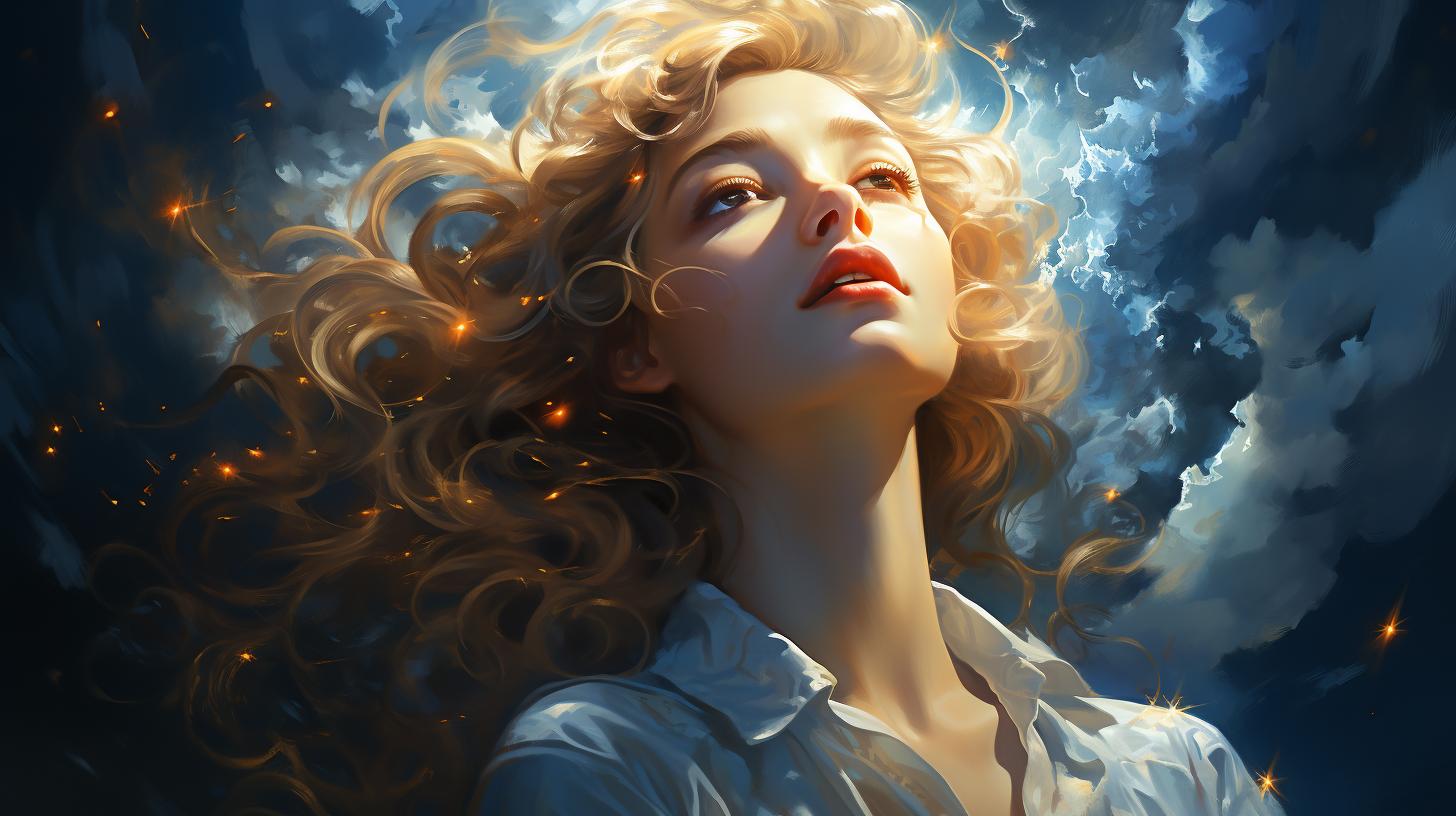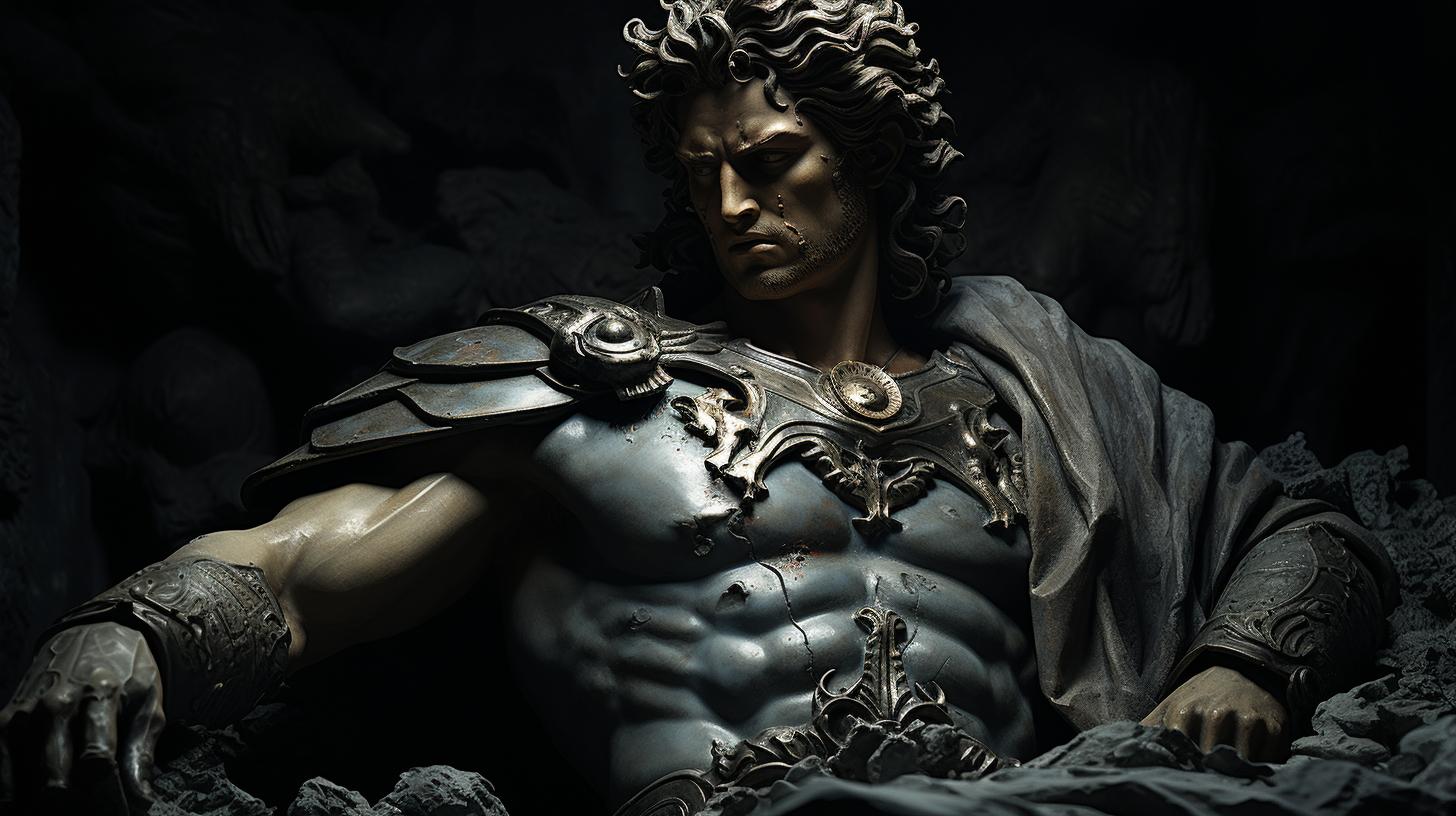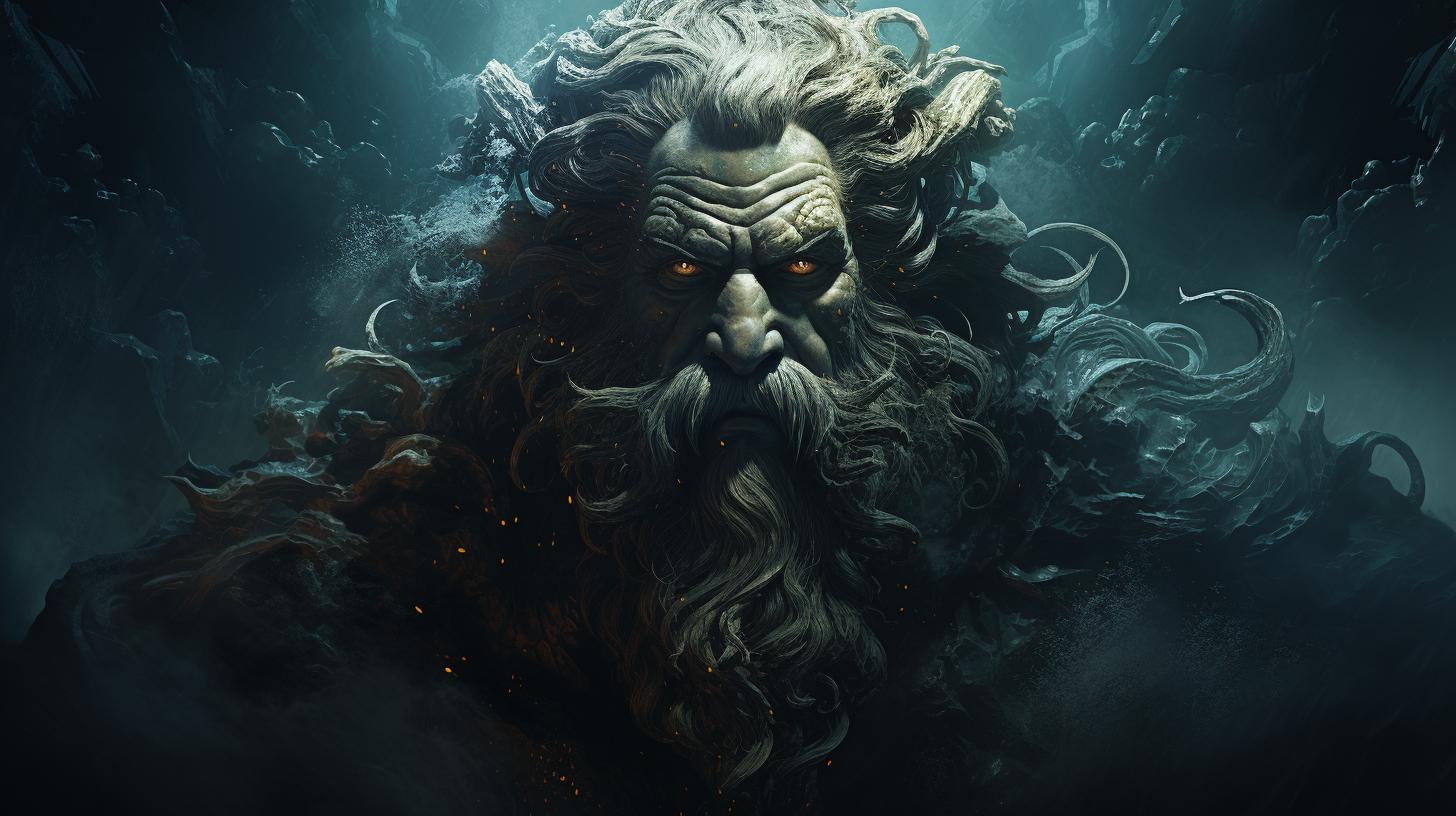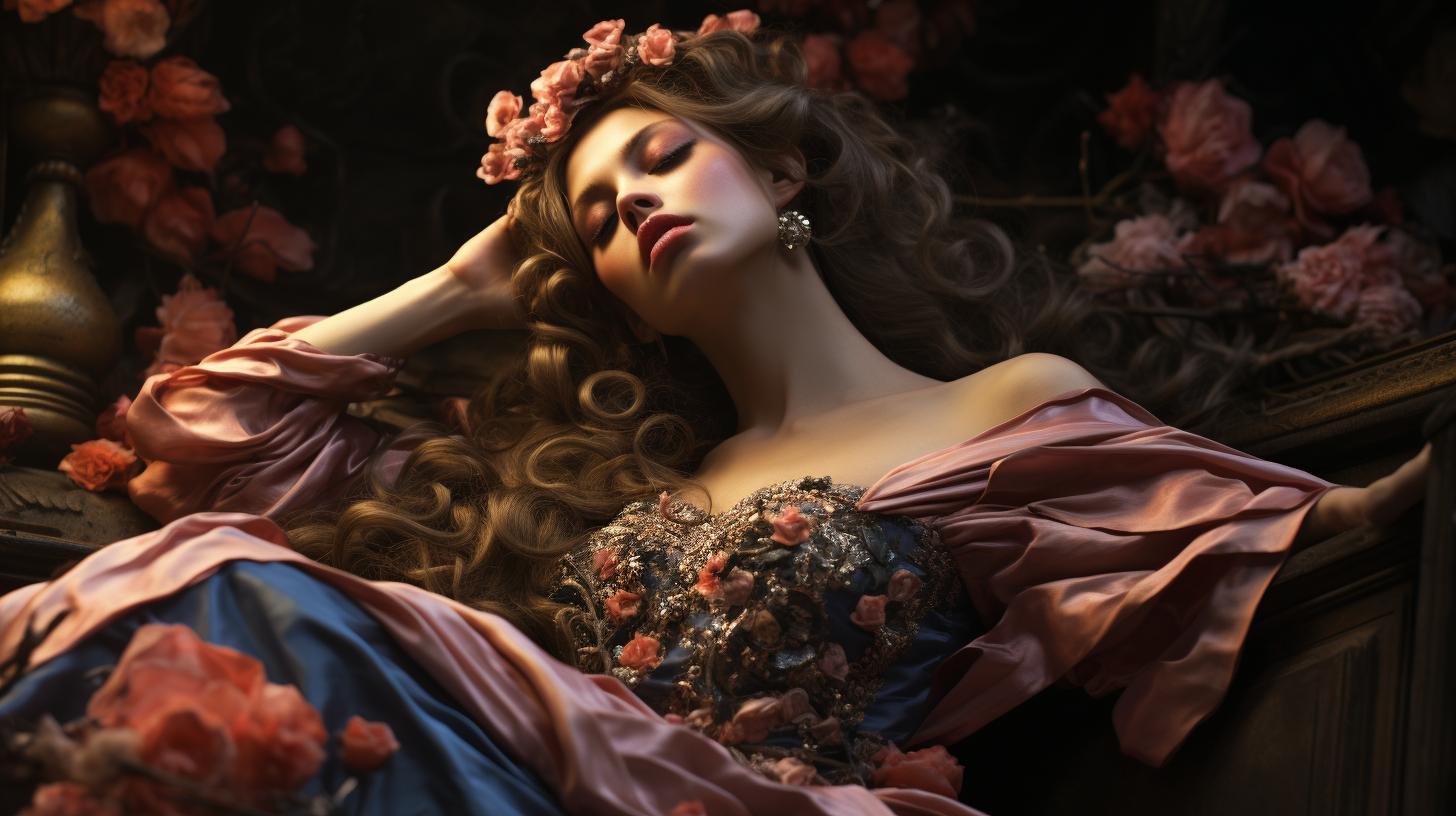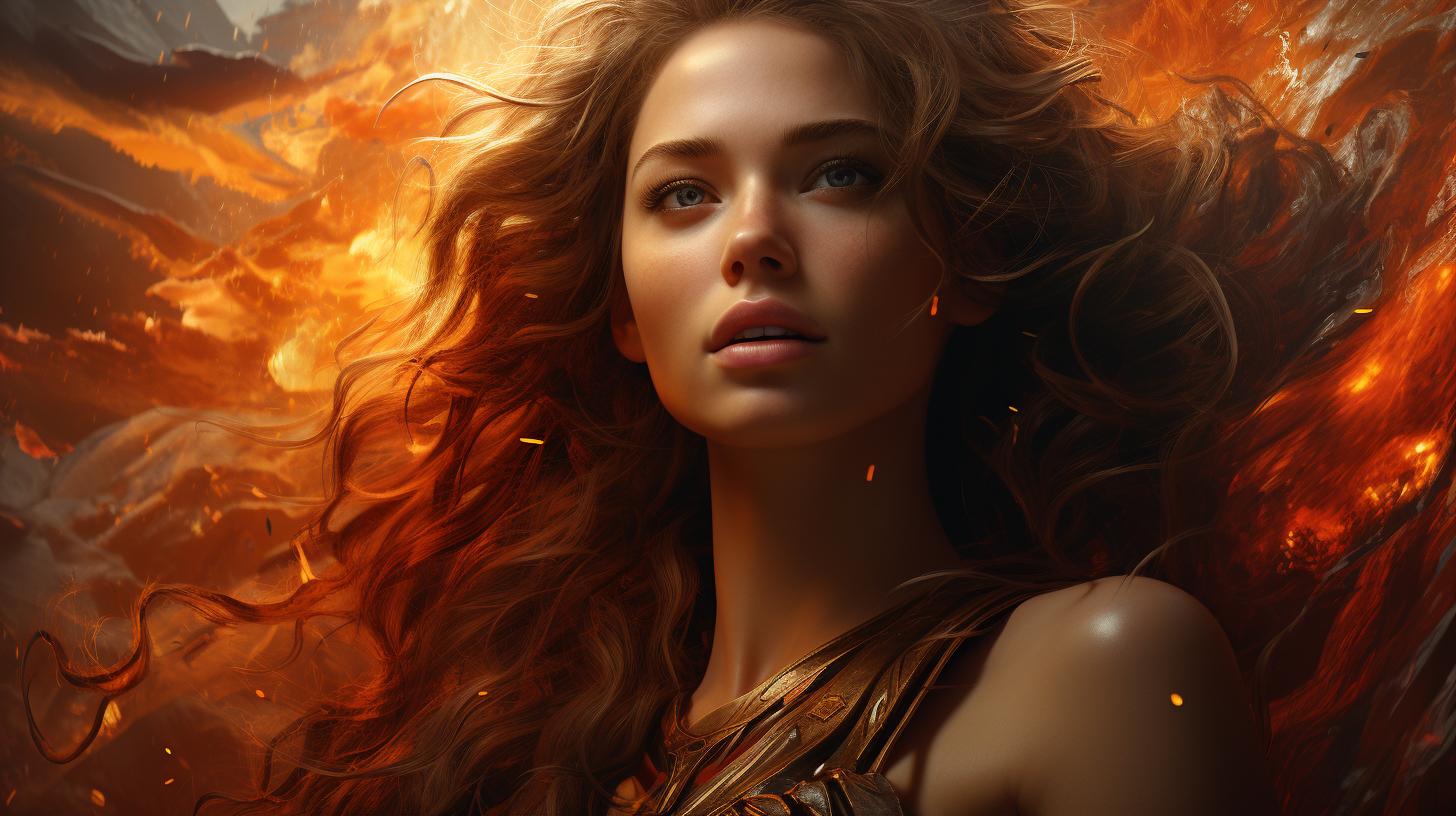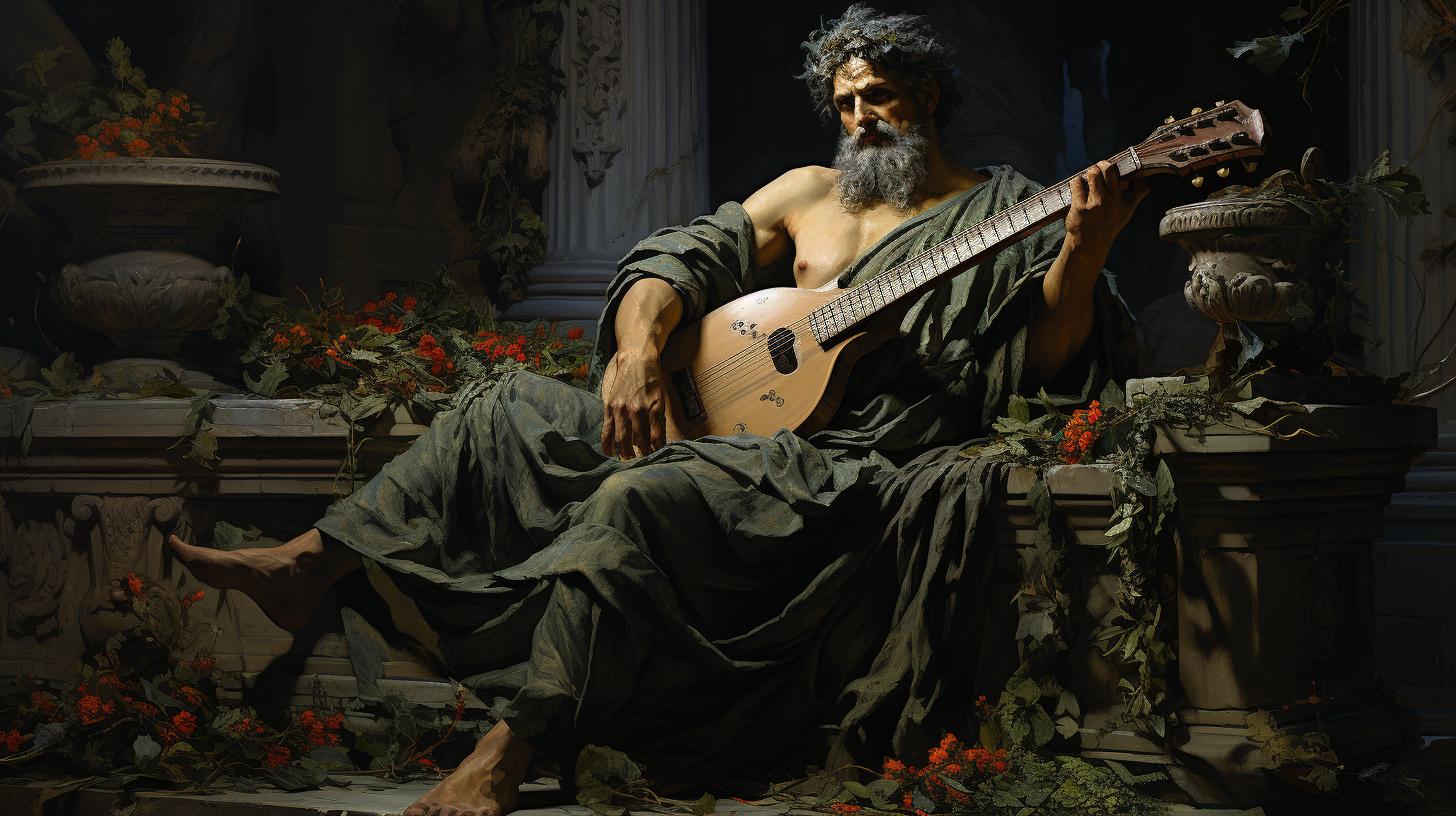Theia the Greek Goddess: Illuminating the Myths and Power of Light
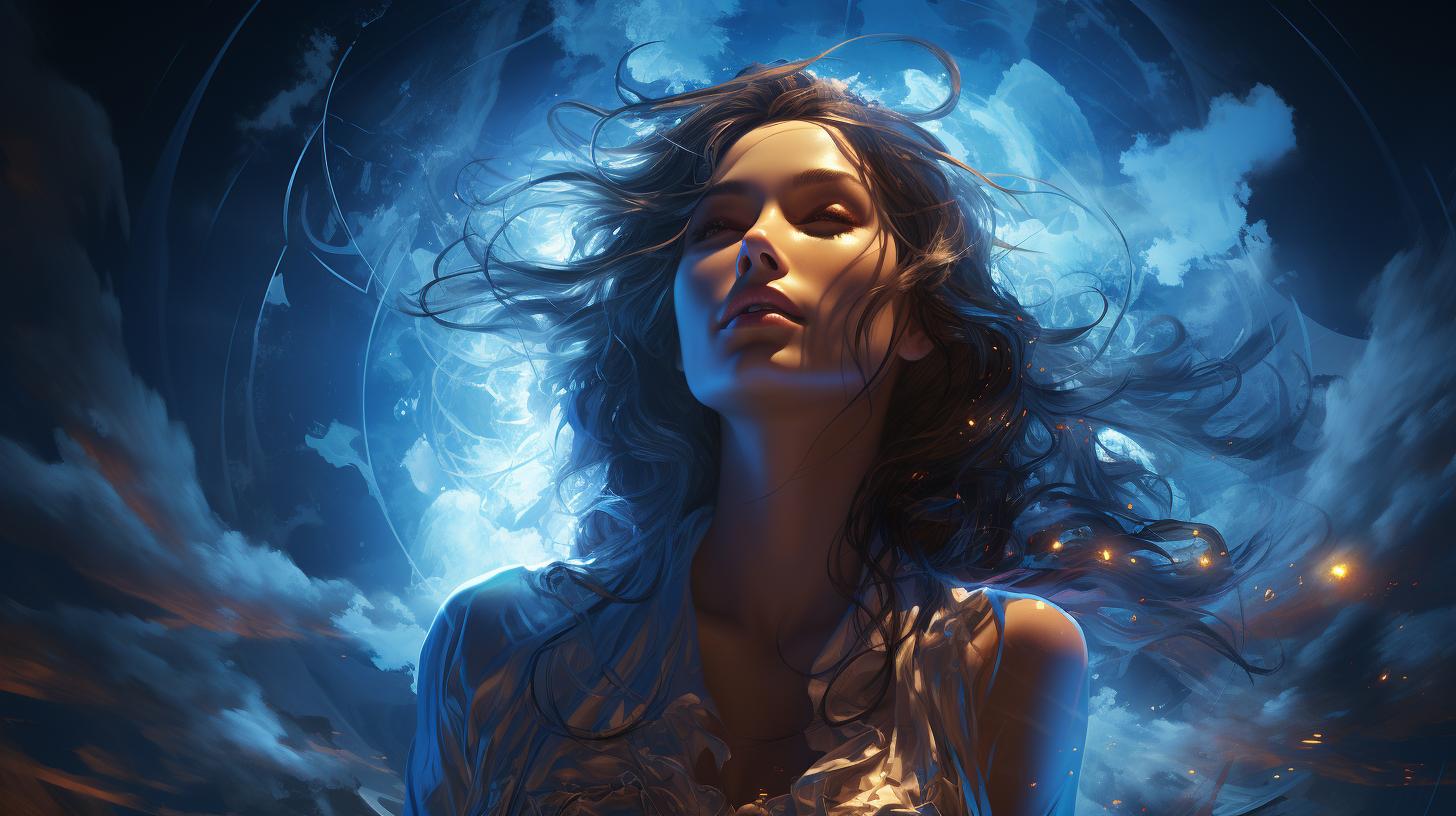
Theia, the Greek goddess of light and vision, holds a significant place in Greek mythology. She was born to Gaia, the earth goddess, and Uranus, the sky god, and is known as the mother of three celestial deities: Helios, Selene, and Eos. Helios brings light and warmth as the sun god, Selene guides the moon through the night sky, and Eos brings new beginnings each morning.
The powers and attributes of Theia, along with her children’s influence, continue to be celebrated in both ancient and modern Western culture.
Theia: The Greek Goddess of Light and Vision
Theia, a prominent figure in Greek mythology, holds the divine title of the goddess of light and vision. As one of the Titanides, the twelve Titans, Theia’s origins trace back to Gaia, the earth goddess, and Uranus, the sky god.
Her name, derived from Greek words meaning ‘view’ and ‘prophecy,’ represents her association with sight and divine knowledge.
Origin and Parentage of Theia
Born to Gaia and Uranus, Theia belonged to a divine lineage. She was one of the many children of this powerful Titan couple, alongside notable siblings such as Oceanus, Tethys, Coeus, Phoebe, Cronus, and Rhea. Theia’s parentage connects her to elemental forces and primordial beings that ruled before the Olympian gods and shaped Greek mythology.
Theia’s Names and Symbols
Alongside her primary name, Theia is known by other appellations, including Aithre (Aethra) and Euryphaessa, which emphasize her association with radiance and brilliance. These names reflect her role as a goddess of light, symbolizing her connection to the illuminating qualities of her children and the shimmering elements of the ancient world.
The Powers and Attributes of Theia
Theia possesses extraordinary powers and qualities, notable among them being her wisdom and ocular abilities. Her exceptional skill in manipulating light extends to gems and precious metals, causing them to shimmer and sparkle under her influence.
Theia’s physical depiction often features long flowing blonde hair and fair skin, accompanied by depictions of light beams emanating from her body, symbolizing her connection to her radiant children.
The Children of Theia: Helios, Selene, and Eos
Within Greek mythology, Theia’s legacy lives on through her remarkable children: Helios, Selene, and Eos. Each deity possesses unique powers and influences that shape the cosmos and our understanding of light and celestial bodies.
Helios: The Radiant Sun God
Helios, known as the radiant sun god, rides across the sky in his golden chariot, illuminating the world with his fiery brilliance. As the bringer of light and warmth, his presence guarantees the arrival of a new day.
With his golden horses, Helios infuses life with vitality and energy as he traverses the heavens.
Selene: Goddess of the Moon
Selene, the enchanting goddess of the moon, glides through the night sky with grace and tranquility. Goddess of mystery and magic, she captivates mortals with her luminous presence. Selene’s silver chariot carries her across the starry tapestry, casting a gentle glow and inspiring awe and wonder in all who gaze upon her celestial beauty.
Eos: Bringer of the Dawn
Eos, the radiant goddess of the dawn, announces the arrival of a new day with her vibrant colors and youthful vitality. As she rises from the horizon, her chariot paints the sky with an array of captivating hues.
Eos’ gentle touch breathes life into the world, awakening nature and heralding the opportunity for new beginnings each morn.
In their own distinctive ways, Helios, Selene, and Eos embody Theia’s divine essence and bring forth the transformative power of light and celestial bodies.
Their presence and influence shape the Greek pantheon, intertwining with the stories and narratives of other deities.
- • Helios’ association with the sun gives rise to Apollo, the god of light, music, and prophecy.
- • Selene’s connection to the moon influences the development of Artemis, the goddess of the hunt and protector of women.
- • Eos’ role as the dawn goddess symbolizes the potential for new beginnings and the pursuit of opportunities.
Theia’s radiant offspring not only hold immense mythological significance but also reflect the enduring power they continue to exert in the world we live in today.
Their eternal roles as sources of light, guiding forces, and beacons of hope make them a cherished part of our cultural heritage and an everlasting testament to the goddess of light, Theia.
The Mythological Influence of Theia’s Offspring
The children of Theia, Helios, Selene, and Eos, played significant roles in Greek mythology and their influence gave rise to the development of other gods and goddesses.
Helios’s Connection to Apollo
Helios, the radiant sun god, held a special connection to Apollo, one of the most important gods in the Greek pantheon. Apollo inherited many attributes from his father Helios, embodying light, music, and prophecy.
Apollo’s knowledge, healing abilities, and pursuit of truth were reminiscent of Helios’s role as the bringer of light and warmth.
Selene’s Influence on Artemis
Selene, the goddess of the moon and daughter of Theia, greatly influenced the development of Artemis, the Greek goddess of the hunt and wilderness. Artemis, often associated with the moon, was believed to have the power to control its cycles.
This connection between Selene and Artemis solidified the association of the moon with femininity and the protectorship of women.
Eos’s Role in New Beginnings
Eos, the goddess of the dawn and another offspring of Theia, symbolized new beginnings and the light that breaks through the darkness. Eos’s responsibility was to bring light to the world each morning, representing the transition from night to day.
Her role as the herald of the day marked the start of new opportunities and possibilities.
The mythological influence of Theia’s children shaped the development of these prominent gods and goddesses in the Greek pantheon.
The connection between Helios and Apollo, Selene and Artemis, and Eos’s role in new beginnings played a significant role in the religious and cultural beliefs of ancient Greece.
Theia’s Role in Greek Mythology and the Titans
Theia, as one of the Titanides, played a significant role in Greek mythology and the reign of the Titans. She was among the powerful siblings, including Oceanus, Tethys, Coeus, Phoebe, Cronus, and Rhea. These Titans ruled before the Olympian gods and each had their unique domains and attributes.
Theia’s Siblings: Oceanus, Tethys, Coeus, Phoebe, Cronus, and Rhea
- Oceanus: Known as the Titan god of the ocean, he personified the expansive and endless waters.
- Tethys: The goddess of fresh water and the mother of rivers, streams, and springs.
- Coeus: Often associated with intellect and the axis of heaven, he was the titan of intelligence and inquisitive nature.
- Phoebe: The goddess of prophecy and intellect, associated with the Oracle of Delphi.
- Cronus: The most well-known among the Titans, who overthrew his father Uranus and ruled during the Golden Age.
- Rhea: The Titaness of fertility and motherhood, known as the wife and sister of Cronus.
The Overthrow of Aether and Theia’s Shining Qualities
In the ancient world, the shimmering elements like gold, silver, and gems were associated with Theia’s shining qualities.
She possessed the ability to manipulate light, making precious metals and gemstones sparkle. Theia’s association with shining and shimmering extends beyond her siblings, as she played a crucial role in the overthrowing of the primordial god Aether. Aether was responsible for the pure shimmering air in the upper atmosphere.
Theia’s unrivaled power over light and her connection to the radiant Helios, Selene, and Eos exemplified her control over luminosity and vision. With her ability to bring forth light and her remarkable ocular abilities, she stood out among the Titans and left an enduring legacy in Greek mythology.
The Enduring Legacy of Theia and her Children
The legacy of Theia, the Greek goddess of light and vision, and her children continues to resonate in various aspects of our modern world. The influence of their powers and attributes is still recognized and celebrated today.
The Influence of Light, Sight, and New Beginnings
Theia’s association with light and vision holds a profound significance. The power of illumination, both literal and metaphorical, remains vital in our lives. The ability to see clearly, to gain insight, and to perceive new opportunities are qualities attributed to Theia and her offspring.
Light symbolizes knowledge, enlightenment, and understanding, shedding light on the mysteries of the world. It represents the pursuit of truth and wisdom. Theia’s connection to light reminds us of the importance of seeking clarity in an ever-changing and complex world.
Sight, as symbolized by Theia, not only refers to physical vision but also encompasses insight and foresight. Theia’s ocular abilities and association with prophecy highlight the importance of perception, intuition, and the ability to anticipate what lies ahead.
New beginnings are another aspect of Theia’s enduring legacy. Eos, the goddess of the dawn, brings the promise of a fresh start with each sunrise. Theia’s connection to new beginnings serves as a reminder of the cyclical nature of life, the endless potential for growth and renewal, and the power of embracing change.
The Cultural Significance of Theia in Western Society
The tales of Theia and her children have had a lasting impact on Western culture and art. Their stories and symbolism can be found in literature, paintings, sculptures, and other forms of artistic expression throughout history.
Theia’s association with light and vision resonates in various cultural domains. The pursuit of knowledge, enlightenment, and understanding is treasured in education and intellectual endeavors. The notion of gaining new perspectives, seeking truth, and embracing the power of perception is woven into the fabric of our society.
Furthermore, Theia’s role as the mother of celestial deities has inspired countless interpretations and representations of motherhood, family, and the divine feminine. Theia’s nurturing nature and her connection to the celestial realm reflect the timeless archetypes present in Western society.
The Continuing Relevance of Theia and Greek Mythology in the Modern World
The enduring relevance of Theia and Greek mythology lies in the timeless themes and universal truths they convey. Theia’s stories remind us of the human condition, the complexities of existence, and the continuous exploration of our place in the cosmos.
Greek mythology, including the tales of Theia and her children, continues to inspire contemporary literature, films, and other forms of popular culture. The enduring popularity of these myths reflects a deep fascination with the ancient world and the enduring power of mythical storytelling.
Furthermore, Theia’s legacy serves as a reminder that our collective human history is rooted in mythology, which continues to shape our understanding of the world and ourselves. The stories of gods and goddesses provide us with a framework for understanding the human experience, the complexities of emotions, and the eternal pursuit of meaning.
- The influence of light and sight on knowledge and understanding.
- The symbolism of new beginnings and embracing change.
- The cultural significance of Theia’s stories in Western society.
- The enduring relevance and impact of Greek mythology in the modern world.
The legacy of Theia and her children remains an integral part of our cultural heritage, as their stories and symbolism continue to inspire and captivate us.
Their enduring influence serves as a reminder of the profound and timeless truths embedded in Greek mythology and the human quest for meaning and enlightenment.
.

